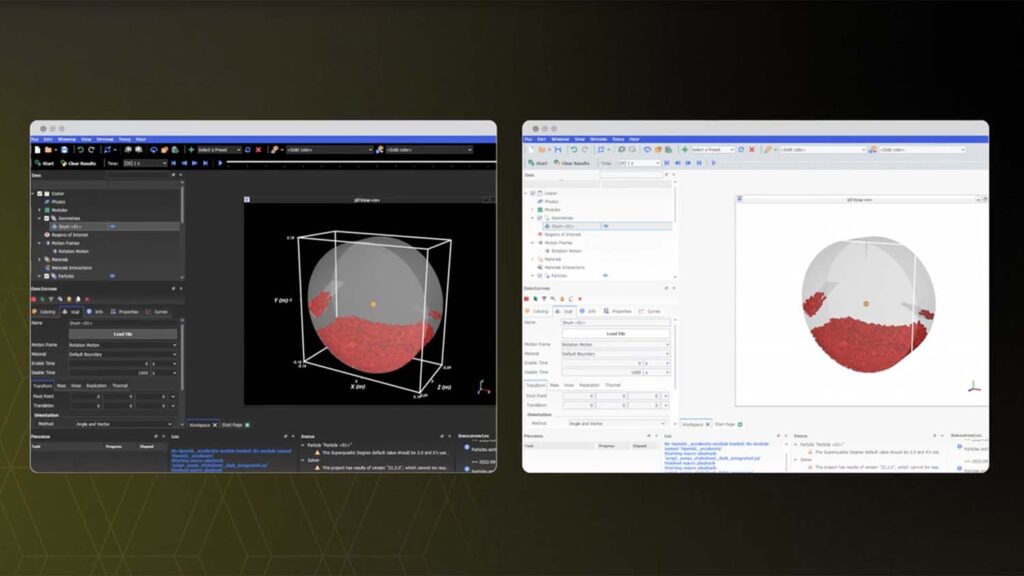Ansys 2024 R1 introduces a new user experience designed to increase productivity with the assistance of a new UI across the Ansys multiphysics portfolio.
The flexible design language provides three design mode choices: Classic Mode for the same look and feel as previous releases, Light Mode for improved visibility and aesthetics, and Dark Mode for reduced eyestrain in low-light environments. Native integration capabilities also provide in-application access to other Ansys products with one click.
The 2024 release also supports HPC scalability to tackle complex product design and development challenges, as well as offering the flexibility needed to tap into compute resources when and where they are needed, via on-premises HPC, bursting to the cloud, or cloud-native applications.
New features in Ansys Discovery 3D simulation software support cloud-connected burst compute capabilities directly from the Discovery UI. Ansys’ testing states that 1,000 simulations can be run in 10 minutes without tying up a local workstation, helping accelerate design space exploration while providing data sets that can be used to train AI.
This speed increase, coupled with AI training, should enable engineers to simulate more product design options earlier in the engineering process.
Performance improvements of 5-50X are claimed thanks to more efficient memory use, faster solve time, and disk space optimisation for noise, vibration, and harshness (NVH) multiphysics simulation workflows.
A dedicated acoustics meshing workflow reduces the time it takes to prepare complex geometries for simulation by up to 12X, says Ansys.
Other noted improvements for Ansys 2024 R1 include application-specific multiphysics enhancements to improve post-processing times for virtual blade models, which are critical in urban air mobility applications, as well as a single simulation platform and workflow for Ansys Icepak, Ansys Mechanical, Ansys HFSS, Ansys RaptorX and Ansys Q3D Extractor solver engines optimise multiphysics-based electromagnetic simulation workflows.
“Increased engineering complexity is a challenge for every industry, from software-defined electric vehicles, or electric vertical take-off and landing aircraft, to bespoke silicon and in-silico healthcare trials,” said Shane Emswiler, senior vice president of products at Ansys. “Ansys 2024 R1 turns challenges into opportunities by improving access to advanced digital engineering. Removing barriers enables users to harness the technology necessary for making sense of those complexities and leverage AI to augment simulation.”
New AI-enabled products launching with 2024 R1 also include Ansys AI+ add-ons that augment simulation with a rich set of multiphysics capabilities using AI. Ansys optiSLang AI+, Granta MI AI+, and CFD AI+ solutions are now available, enabling users to enhance the core functionality of Ansys software.
The Ansys SimAI solution and a beta version of AnsysGPT were recently announced. SimAI is a cloud-enabled generative AI offering that uses previous simulation results to predict the performance of a new design within minutes. AnsysGPT is an Ansys-trained AI virtual assistant for 24/7 customer support.






